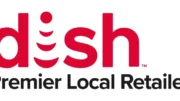It was one of the most-read articles in the year we relaunched and it still holds up today. Ad-skipping was big news in 2012 thanks to the Hopper. When Hopper launched it had a feature called “Auto Hop” that let you skip an entire break. It’s disabled on many channels due to contracts, but it is still there if you want it. Back then it was touted as a really revolutionary feature. Today it’s really not discussed. Ad-skipping wasn’t new as we showed you… it goes back thousands of years actually.
Of course, ad-skipping has gotten easier… or has it? The earliest ads just required you to look in the other direction. Today we’d need some sort of camera-based gestural recognition system, or maybe you could just go into the other room.
Are ads making a comeback?
In the 7 years since I wrote that article, something interesting has happened. We spent two decades perfecting technologies to help us skip commercials, and now many people are opting to put them back in non-skippable form. Cord-cutting has started to become extremely expensive. If you bundle a live TV service like DIRECTV NOW and Sling and add Netflix, Hulu, and a premium streaming package or two, you could be getting pretty close to paying what you were paying for cable or satellite. Add to that, it’s harder to find what you’re looking for.
So a funny twist of fate… the streaming services that are really growing are the ones with commercials. I’m talking about services like Pluto, PopcornFlix, and Tubi where you get commercial breaks. You can’t even skip them.
Pluto really mimics the live TV experience with about 100 live channels plus tons of on demand, all for free. Some of the channels aren’t much to write home about, but surprisingly there’s a lot of good content too. You just have to accept that you’ll watch about 2 minutes of commercials every 20 minutes. That’s a little better than broadcast TV but still not great.
You have to pay for stuff somehow.
That’s the big message here. There was that moment in time, from maybe 2003-2013, where you could skip ads and not worry. Most people were still watching live, they weren’t skipping ads, and companies were making enough money without worry about you and your ad-skipping tendencies. However, as more people got DVRs, that changed. It got harder and hard to pay for content with ads since more people skipped them. This meant cable and satellite providers were charged more for the content. In turn, this drove people to paid services like Hulu and Netflix. And yet, both companies have looked as potentially adding more advertising. Hulu’s ad-supported tier is very popular and even Netflix is looking at adding some sort of commercials.
Because, that’s the real lesson here. There’s no such thing as a free lunch. Content may be free to you but someone is paying to make it and distribute it. The Auto Hop battle may have been the tipping point in 2012. It might very well have been that line in the sand that eventually drove us to where we are now… with more and more non-skippable commercials. We’re right back where we started.





